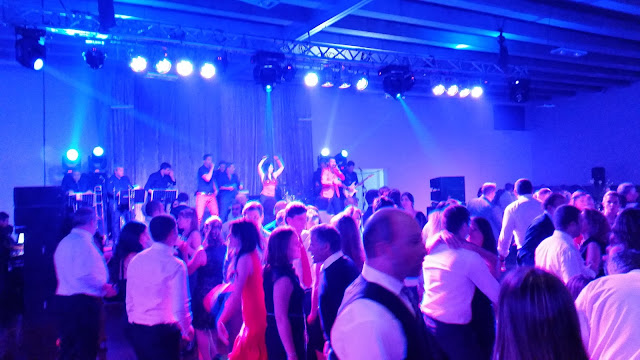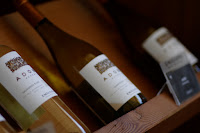 |
| Stage right. Far right. |
The first time my wife introduced me to the music of Chilean rock band La Ley, I yawned and asked her why they had a Hawaiian name (La Ley is actually Spanish for "The Law"). After hearing more of their songs on subsequent road trips, their catchy hooks and indie rock sound eventually began to win me over. Chilean bands have a throwback vibe to them, reminding me of how pop-rock music used to be played in the US back when bands could actually play their own instruments and didn't rely on dance moves and high production to catch someone's interest.
During a visit to Chile, my wife's cousin, Andy, had tickets to see La Ley perform at the Sun Monticello Grand Casino in the town of San Francisco de Mostazal. The casino is about an hour south of Santiago. Andy brought his girlfriend Susan, and me and my wife made four. We arrived early and found a pizza joint inside the mall attached to the casino. The mall area is filled with boutique stores, video game arcades, and a number of business fronts that cater to kids. Even after the concert, approaching midnight, I was impressed with the number of young children I saw running around playing games, eating pizza, and revelling in their weekend.
 |
| Outside the casino. |
"It's Chile. Kids here stay up later," was the simple explanation my wife gave me.
Attached to the mall, beyond a series of glass double-doors, is the casino. Within the casino, not too different than what one might find in some of the smaller Vegas hotels, is a music stage setup inside a large ballroom. Being a ballroom, the seating wasn't part of a permanent structure. Chairs were setup on the floor one-by-one like a family reunion. Chairs were set up to match the tickets sold. Our tickets were for the front row just right of the stage. When we arrived, there were people sitting in two of our seats. They were two women dressed in tight tops and short skirts. An older gentleman working for the venue told us there was a mishap with the tickets and duplicates of the same seat number had been sold. Since the two women had large, half-bared breasts and Andy and I didn't,
 the gentleman said we had to sacrifice our seats.
the gentleman said we had to sacrifice our seats."There are plenty in the back that are empty," he told us.
My wife and Susan stayed in their seats, but and Andy and I moved to the back where several unused chairs sat cold and vacant.
"Doesn't seem fair," I said to Andy while we were out in the lobby grabbing drinks. "Why not just put down another couple of chairs and extend the row? I saw them doing that earlier."
 |
| Show's on! Phones up! |
Andy didn't seem too phased by it. "It's Chile, man." Andy works in promotions. He has already seen La Ley play more times than he can count. Tonight was for me and my wife as a treat on our visit.
Prior to the show I had been a moderate fan of the group. After the show, I would put La Ley down as one of my favorite bands. That happens when you see a talented band play live. There is something special about live music, about sharing it with a crowd, with friends, at an event.
La Ley formed in 1988 in Santiago. Their first official studio album was released in 1991. The grew in popularity in Chile, Argentina, and even Mexico during the early 90s. In 1995, their popularity expanded with the release of the hit album Invisible. They continued to release albums and tour until 2005 when they decided to call it quits. They made a return in 2013, but in August of 2016 it was announced that they were breaking up again. Will it be for good this time? Time will tell.
 |
| Publicity image of La Ley from BoomOnline. |



























































